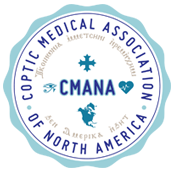[vc_row][vc_column][ult_content_box bg_color=”#1e73be” box_shadow=”horizontal:px|vertical:px|blur:px|spread:px|style:inset|” link=”url:https%3A%2F%2Ffb.watch%2Fdu81Y5UvN6%2F||target:%20_blank” el_class=”Highlights from our May 2022 Trip!” hover_box_shadow=”horizontal:px|vertical:px|blur:px|spread:px|style:none|”][ult_buttons btn_title=”Click to see highlights from our May 2022 Mission!” btn_link=”url:https%3A%2F%2Ffb.watch%2Fdu81Y5UvN6%2F||target:%20_blank” btn_align=”ubtn-center” btn_size=”ubtn-block” btn_title_color=”#1e73be” icon=”Defaults-film” icon_size=”32″ btn_icon_pos=”ubtn-sep-icon-at-left” btn_font_style=”font-weight:bold;” btn_font_size=”desktop:40px;”][/ult_content_box][vc_column_text][/vc_column_text][/vc_column][/vc_row][vc_row][vc_column width=”1/2″][vc_custom_heading text=”General Information:” font_container=”tag:h3|text_align:left” use_theme_fonts=”yes”][vc_column_text]
Namibia is a country in the southern region of continental Africa. It borders the Atlantic Ocean to its west, Zambia and Angola to the north, Botswana to the east, and South Africa to the south. Namibia is a fairly new country, seceding from South Africa in 1990. Namibia is home to a number of ethnic groups which are remnants of earlier colonization. The largest of these groups are the Ovambo and Kavango people. While English is the most recognized language in Namibia, a high percentages of the population speaks other languages including Afrikaans and German. The Coptic presence in Namibia is localized near Windhoek, Namibia’s capital, and in northern regions of the country. The Coptic Church in Namibia is led by Fr. Mark Arsany and is under the control of his grace Bishop Antonius Morkos.
Namibia has one of the most arid climates of the Sub-Saharan countries. It is recommended that chap stick and lotion are used to combat this. The nightly temperature in Namibia (at the time of the trip) is fairly cold. This is due to the fact that they are in the southern hemisphere and undergo winter during the American summer months. Heavy cloths are recommended. There is a low chance of precipitation in Namibia during the winter months.
[/vc_column_text][vc_custom_heading text=”Visa:” font_container=”tag:h3|text_align:left” use_theme_fonts=”yes”][vc_column_text]A visa can be acquired at the time of arrival as long as travelers have at least two blank pages in their passport.
[/vc_column_text][/vc_column][vc_column width=”1/2″][vc_custom_heading text=”Past Service Overview:” font_container=”tag:h3|text_align:left” use_theme_fonts=”yes”][vc_column_text]
- Volunteers stayed at the Coptic church in Windhoek as well as a nearby guest house. Volunteers served a number of different children at and around the city of Windhoek. These children include Sunday School kids as well as children whom attend Home of Good Hope, a soup kitchen that services over 500 children. Volunteers were also contacted by the Namibian Ministry of Health to address a recent Hepatitis E outbreak in the country through an outreach program. It is unlikely that future trips will participate in this outreach program though this is an example of potential projects that volunteers will be able to participate in.
- Volunteers participated in daily personalized prayers led by Fr. Mark Arsany as well as liturgy services on Sundays. Servants also participated in day trips at their request. These trips included a safari, a trip to a beach, the largest sand dune in Namibia, etc.
- The program fees cover the cost of food, housing, and transportation for the duration of the trip. It is recommended that at travelers bring at least $200 USD for any further expenses they may develop. These expenses include money for souvenirs, day trips, supplies from the super market, etc.
- Travelers will have limited access to Wi-Fi at the church and the nearby guest house. Travelers may also purchase a SIM card for their phone for further data usage at their desire.
